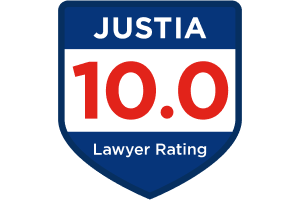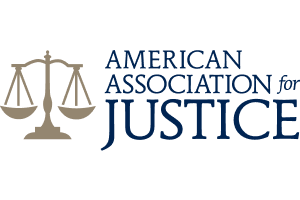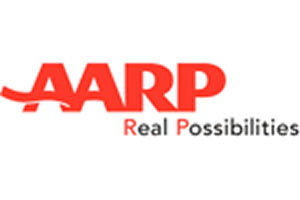New York Scaffold Accident Lawyer
Scaffolding is a common feature of construction projects throughout New York, but it also presents serious risks. Many scaffold accidents result from preventable safety failures, such as missing guardrails, unsecured planks, or poorly assembled equipment. When these protections are not in place, workers may suffer serious injuries.
If you or someone you love was injured in a scaffold accident, it’s important to act quickly. You may be entitled to significant compensation beyond what workers’ compensation offers. An experienced New York scaffold accident lawyer can evaluate your case, explain your legal options, and help you hold the responsible parties accountable.
Lawyers working with our office have successfully recovered substantial compensation for victims injured in scaffold accidents in New York, such as:
- $3.8 Million Settlement reached before trial in a case where a 40-year-old construction worker died after falling from a defective scaffold at a construction site in Ulster County.
- $7 Million Settlement in Bronx County in a case where a 40-year-old construction worker suffered spinal injuries after falling from a baker’s scaffold on a job site.
- $2 Million Verdict by a Kings County jury in a case where a 65-year-old bricklayer fell from a scaffold at a construction site, fracturing his heel and suffering a permanent limp.
Why Are Scaffold Accidents So Dangerous?
Falls from heights are one of the leading causes of injury and death on construction sites. Scaffolds, by their very nature, place workers in elevated, precarious positions. When something goes wrong, the results can be catastrophic.
Common types of scaffold accidents include:
- Falls from heights: Often caused by missing or improperly installed guardrails, inadequate or unstable working platforms, or the lack of required safety harnesses and lifelines. These failures frequently indicate violations of workplace safety regulations and can be the basis for a claim under New York’s gravity-related accident laws.
- Struck by falling objects: Occurs when tools, equipment, or materials are not properly secured on the scaffold platform or when overhead protection is absent below the work area. Failure to implement proper material handling and overhead protection procedures can lead to severe injuries and may point to negligence on the part of site management or contractors.
- Scaffold collapses: Resulting from fundamental failures like improper or rushed assembly, overloading the scaffold beyond its weight capacity, or the use of damaged or defective components. Collapses are often direct consequences of failing to follow manufacturer instructions and safety standards for erection, use, and inspection, which are critical points in establishing liability.
- Electrocutions: Happen when scaffolds are erected or moved too close to overhead power lines without proper safety planning or de-energizing of lines. This dangerous proximity is typically a violation of safety codes and can result from inadequate site assessment and supervision.
- Tip-overs: Frequently caused by inadequate anchoring or bracing, uneven ground, or failure to account for environmental factors like strong winds. A scaffold tipping over often signifies a failure to properly secure the structure according to engineering and safety requirements.
Scaffold accidents can result in devastating injuries that require extensive medical treatment and lead to long-term or permanent consequences. These serious injuries often include:
- Traumatic Brain Injuries (TBIs): Ranging from concussions to severe, irreversible brain damage, TBIs can cause cognitive impairments, memory loss, personality changes, and a lifetime need for care.
- Spinal Cord Injuries (SCIs): Damage to the spinal cord can lead to partial or complete paralysis (paraplegia or quadriplegia), loss of sensation, and a host of secondary health issues, resulting in permanent disability and significantly altered quality of life.
- Fractures and Crushed Limbs: Falls and impacts can cause broken bones, complex fractures, and crushing injuries that may require multiple surgeries, lead to chronic pain, permanent loss of function, or even amputation.
- Internal Bleeding or Organ Damage: The force of a fall or impact can cause severe internal injuries to vital organs, often requiring emergency surgery and leading to long-term health complications.
- Psychological Trauma: Victims often suffer from Post-Traumatic Stress Disorder (PTSD), anxiety, depression, and other psychological impacts that require therapy and support, affecting their ability to return to work or enjoy life.
- Chronic Pain: Many serious scaffold injuries result in persistent, debilitating pain that requires ongoing medical management and impacts every aspect of the victim’s life.
- Permanent Disabilities or Death: Tragically, scaffold accidents can result in catastrophic injuries that leave victims permanently disabled, unable to return to their former work or live independently, or can tragically result in fatalities.
What Should I Do After a Scaffold Accident?
Accidents on scaffolds can happen quickly and unexpectedly, leaving victims in pain and unsure of what steps to take next. If you’ve been injured in a scaffold accident, it’s important to stay calm and take the right actions to protect your health and your legal rights. Here’s what you should do right after a scaffold accident.
- Get medical attention immediately
- Report the incident to your supervisor
- Document the scene if possible—take photos of the scaffold, surrounding conditions, and injuries
- Preserve any tools or gear used during the accident
- Contact an experienced New York scaffold accident lawyer as soon as possible
Time is critical. Conditions at construction sites change quickly, and critical evidence may be lost.
Who Can Be Held Legally Responsible for a Scaffold Accident?
If you were injured in a scaffold accident in New York, your legal claim may be based on several different liability theories. Each theory offers a pathway to compensation and may apply depending on who was involved and how the accident happened. A single case may involve more than one theory of liability. Here are the most common legal theories used in scaffold injury claims:
- Strict Liability under Labor Law § 240(1): Labor Law § 240(1), also known as the Scaffold Law, is one of the strongest protections for construction workers in New York. It imposes strict liability on property owners, contractors, and other parties responsible for ensuring worker safety when workers are exposed to gravity-related risks, such as falling from a scaffold or being struck by a falling object. Under this law, if the proper safety equipment (like scaffolds, ladders, or harnesses) is not provided or fails, the responsible party can be held liable for the injury, even if no negligence is proven. This law is designed to protect workers by ensuring that those in control of a worksite take appropriate measures to prevent falls and other gravity-related accidents. The Scaffold Law holds contractors and property owners accountable for worker safety at heights, regardless of fault.For example, in Blake v. Neighborhood Housing Services of New York City, Inc., 1 N.Y.3d 280 (2003), the plaintiff fell from a ladder while performing renovation work. The Court of Appeals held that the mere fact of a fall does not automatically establish liability under Labor Law § 240(1). The court emphasized that if the worker’s own negligence is the sole proximate cause of the accident, liability may not be imposed on the owner or contractor. This decision clarified that strict liability under the Scaffold Law is not absolute and that the circumstances of each case must be carefully examined.
- Statutory Liability under Labor Law § 241(6): Labor Law § 241(6) provides additional protections for workers injured during construction, demolition, or excavation. If your injury was caused by a violation of a specific safety rule set forth in the Industrial Code (12 NYCRR Part 23), you may be able to pursue a claim under this statute. The law requires employers and contractors to follow specific safety regulations that are designed to protect workers on construction sites. For example, the Industrial Code includes provisions related to the proper use of scaffolds, ladders, and machinery to prevent accidents. Under this law, if a construction site safety rule is violated, and it directly leads to your injury, you may be entitled to compensation. However, comparative fault applies, meaning that if you share any responsibility for the accident, your recovery could be reduced based on your level of fault.
- Negligence under Labor Law § 200 or Common Law: You may recover compensation if your injury resulted from a dangerous condition on the property or from unsafe work methods, and the owner or contractor knew or should have known about the hazard or had control over the work. In these cases, you must prove that the party acted negligently.
- Product Liability: If your injury was caused by a defective scaffold, ladder, or safety equipment, you may have a claim against the manufacturer, distributor, or supplier of that product. This may involve showing a design flaw, manufacturing defect, or lack of adequate warnings.
- General Negligence (Third Parties): In some situations, subcontractors, site managers, or equipment suppliers may be held liable for failing to follow safety procedures or contributing to unsafe conditions on the worksite.
Because scaffold accidents often involve multiple parties and overlapping responsibilities, it is important to have a New York scaffold accident lawyer who can analyze all angles of liability and build a strong case on your behalf.
Who Can Be Sued After a Scaffold Accident?
Multiple parties may be legally responsible for injuries resulting from a scaffold accident. Liability depends on who had control over the worksite and who failed to ensure that proper safety measures were followed.
- Property owners (except owners of 1-2 family homes who don’t direct the work): Property owners are often responsible for maintaining safe working conditions on their premises. If they fail to ensure the worksite meets legal safety standards, they may be held liable for injuries.
- General contractors: General contractors are typically responsible for overseeing the entire construction site. When they fail to enforce safety protocols or allow unsafe practices to continue, they can be held accountable for resulting accidents.
- Construction managers: These individuals or entities often play a central role in managing project timelines and jobsite safety. If they neglect to identify or correct scaffold-related hazards, they may share liability for injuries.
- Subcontractors who created the hazard: When a subcontractor’s work directly causes a scaffold to become unstable or unsafe, that subcontractor may be liable for any resulting injuries.
- Manufacturers or suppliers of defective scaffold parts: If a scaffold accident is caused by faulty equipment, the manufacturer or supplier of the defective parts can be held responsible under product liability laws.
Contact an experienced New York scaffold accident lawyer to identify every party that may be responsible for your injuries. A skilled attorney will investigate the facts of your case, preserve evidence, and build a strong claim for full compensation.
Note that in many cases, workers injured on the job may receive benefits through workers’ compensation insurance, which provides medical coverage and compensation for lost wages regardless of fault. However, workers’ compensation benefits are often limited in what they can cover, and workers cannot sue their employer for additional compensation. That’s where a third-party lawsuit can come in. If a third party, such as a contractor, equipment supplier, or another worker not employed by your company, contributed to the scaffold accident, you may be able to file a lawsuit against them for additional damages. This could cover pain and suffering, additional medical expenses, and other losses not covered by workers’ compensation. It is important to consult a scaffold accident lawyer to determine if you have a viable third-party claim in addition to workers’ compensation.
What Compensation Can I Recover After a Scaffold Injury?
If you were injured in a scaffold accident, workers’ compensation may cover your medical bills and partial lost wages. However, you may also have the right to sue third parties, such as a property owner, general contractor, or equipment manufacturer, if their negligence contributed to your accident. These third-party lawsuits can provide financial recovery that goes beyond what workers’ compensation offers.
Depending on the circumstances of your case, you may be entitled to recover:
- Medical expenses: This includes emergency care, surgeries, hospital stays, medication, physical therapy, and any long-term treatment required.
- Lost wages: Compensation may include wages you’ve already lost and future income if your injury limits your ability to return to work or reduces your earning capacity.
- Pain and suffering: This refers to the physical pain and emotional distress caused by the accident and its aftermath.
- Loss of enjoyment of life: If your injuries prevent you from engaging in hobbies, social activities, or daily routines, you may be entitled to damages.
- Loss of consortium: If you’re married, your spouse may recover damages for the loss of companionship and support.
- Wrongful death damages: If a loved one died in a scaffold accident, surviving family members may pursue damages for funeral expenses, lost financial support, and emotional suffering.
These types of damages are not available through workers’ compensation. That’s why it’s important to speak with an experienced New York scaffold accident lawyer who can evaluate all of your legal options and help you recover the full compensation you’re owed.
For example, in Chowdhury v. Rodriguez, 2008 NY Slip Op 0844, the plaintiff was a painter who fell from a ladder while doing renovation work. He sued under Labor Law § 240(1), which protects workers from elevation-related risks involving both ladders and scaffolds. A jury awarded him $1.2 million for past pain and suffering and $1.5 million for future pain and suffering. The appellate court reduced the future damages to $500,000, finding the award too high. While the case involved a ladder, it is often used in scaffold cases to help courts decide whether pain and suffering awards are too low or too high.
What Is the Statute of Limitations for Scaffold Accident Claims in New York?
If you are considering legal action after a scaffold accident in New York, it is important to understand the time limits for filing a claim. These deadlines are set by law and are strictly enforced. Missing them could mean losing your right to compensation, no matter how strong your case may be.
Here are the key deadlines that may apply:
- Personal injury claims: Under CPLR § 214(5), you generally have 3 years from the date of the accident to file a lawsuit for personal injuries caused by a scaffold accident.
- Wrongful death claims: If a loved one died due to a scaffold accident, EPTL § 5-4.1 gives surviving family members 2 years from the date of death to file a wrongful death lawsuit.
- Claims against government entities: If your claim is against a city, town, or other public agency, you must file a Notice of Claim within 90 days of the incident under General Municipal Law § 50-e, and the lawsuit must be filed within 1 year and 90 days under GML § 50-i.
To avoid missing a deadline, contact an experienced scaffold accident attorney in New York as soon as possible.
Frequently Asked Questions About Scaffold Accidents
A: Yes. Labor Law § 240(1) also covers ladders and other devices used for elevated work. The law protects workers injured due to falls from unsafe ladders or falling objects caused by a lack of proper fall protection. Whether you were using a scaffold, ladder, hoist, or similar equipment, you may still have a valid claim if the equipment failed or wasn’t provided. Courts have repeatedly held that the same legal protections apply to ladder-related accidents as they do to scaffold cases.
A: If you were injured while working on a one- or two-family home, the homeowner is usually not liable under Labor Law § 240(1), unless they directed or controlled how the work was done. But that doesn’t mean you’re without options. Your employer could still be held responsible under other legal theories, and premises liability may apply if the accident was caused by a dangerous condition on the property that the owner knew or should have known about. In some cases, other parties like general contractors, subcontractors, or equipment suppliers may also share responsibility. An experienced scaffold accident lawyer can help identify all potential claims.
Contact Stephen Bilkis & Associates
If you or a loved one was seriously injured in a scaffold accident, you may be entitled to compensation for medical bills, lost wages, and other damages. Property owners, contractors, and other responsible parties have a legal duty to provide proper safety protections on construction sites. When they fail to do so, they may be held accountable under New York law. An experienced scaffold accident attorney serving New York can help you understand your legal rights, identify liable parties, and take steps to recover the compensation you deserve. Don’t wait to get help as important deadlines apply.
Contact Stephen Bilkis & Associates today at 800.696.9529 today to schedule a free, no-obligation consultation. Legal help is available throughout New York City, Long Island, Westchester County, and surrounding areas, including the Bronx, Brooklyn, Manhattan, Queens, Staten Island, Nassau County, and Suffolk County.






